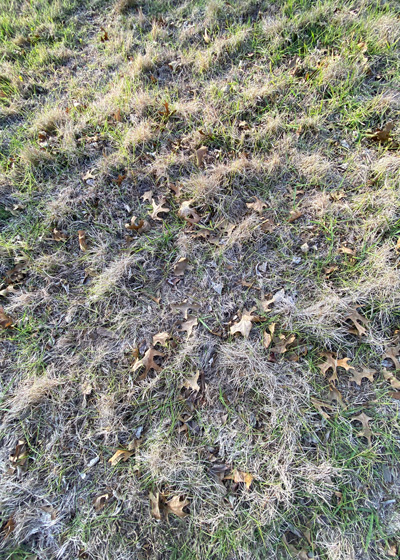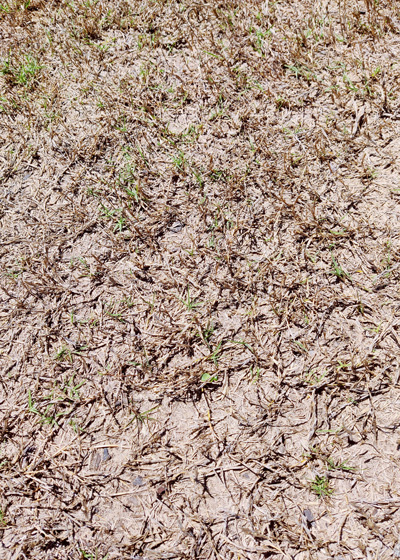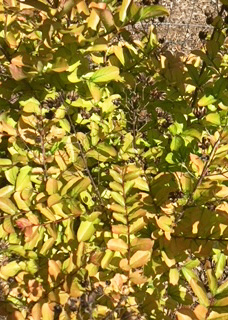Q&A – Ask Neil: April 20, 2023
(Please read these instructions carefully.)
Before you post your question, please look at recent issues to see if someone else has already asked it. You might find your answer there.
How to submit your question…
• Click the link provided below to post your question. After you submit your question, a new window will pop up giving you the address to which you can e-mail a photo to accompany your question. Clear, medium-resolution photos. (Try to avoid low-res thumbnail photos, please, in case I have to zoom in to see things.)
• Click here to post your question.
• Please only post your question one time.
• One question per reader, please.
• Please use this only for posting questions – not for standard emails.
• Watch for your answer in the following week’s e-gardens.
• I choose those of greatest general interest. For example, plant IDs seldom make the cut.
• I must have your first name or initials.
• I must have your city or county. (Texas is a very large state.)
QUESTION 1
WHY IS MY ZOYSIA TURNING GRAY?
Question: Why is my zoysia turning gray? Gary O’L., Boerne.

Answer: It looks like these were brand new plugs late last year??? It looks like they could have dried up over the winter. Zoysias are completely winter-hardy where you are, but they can dry out and die. I don’t believe this is related to any insect or disease. With only the few words you gave me and this one photo, that’s my best guess. It looks like it’s trying to stage a comeback. If you can remember what variety you bought you might want to buy some more plugs or pieces of sod and position a few pieces to fill in the voids.
QUESTION 2
WHAT VARIETIES OF ST. AUGUSTINE ARE RESISTANT TO ST. AUGUSTINE DECLINE?
Question: What are the varieties of St. Augustine that are resistant to St. Augustine decline (SAD)? You referred to them, but I’d like to have some names. Danny S., Tarrant Co.
Answer: Pretty much any named variety of St. Augustine has to be resistant to this fatal virus or it wouldn’t be worth naming and putting into production. Raleigh was one of the first and it’s still one of the best. Palmetto would be another option. I’m also factoring in winter hardiness since you’re in North Central Texas. Floratam is the most popular choice in South Texas, but it won’t survive extreme winters north of Houston and San Antonio with any certainty. A lot of us learned that the expensive way the year it was introduced in the 1970s.
QUESTION 3
WHAT CAN I DO WITH TALL CRAPE MYRTLES THAT GET LITTLE SUN?
Question: I have a fence line of crape myrtles. They are 30 years old and 30 ft. tall. They have very few leaves at their tops because of shade from the neighbors’ yard. I’ve never cut them back. What should I do with them? Margaret H., Whitehouse, Smith Co.
Answer: Unfortunately, if you cut them back, they won’t get any more sunlight, so they’ll just regrow as tall and lanky as they are now. If the neighbors’ tree(s) are going to be there “forever,” you have little choice but to replace your crape myrtles. They need full sun to grow and bloom properly. Is there any way to move the best of them to better planting sites, then replace them with tall hollies or some other shade-tolerant plant?
QUESTION 4
HOW DO I CARE FOR A NEW LITTLE GEM MAGNOLIA?
Question: I’ve just planted a Little Gem magnolia. How much should I water it? I’ve heard from one source that I would have a hard time over-watering it, but from another that they don’t like to be kept wet. LaVon J., Tarrant Co.
Answer: Water it by hand for the first 2-3 years. That means with a hose and a water bubbler or water breaker at the end of the hose. Soak it deeply every second or third evening from now through October. You mustn’t let its original soil ball dry out. It will dry much more quickly than the surrounding native soil simply because it’s full of the tree’s roots. With magnolias, which are native to the South where it rains frequently, better to be a bit too wet than a bit too dry.
QUESTION 5
WHY IS LIVE OAK NOW DROPPING BARK?
Question: Perhaps you have addressed this before. Why has our 30-year-old live oak, which appears to be in great shape, suddenly started dropping chunks of bark down near the ground? Cindy P., San Antonio.
Answer: That sounds like the “radial shake” damage that we’ve been reporting here on and off for the past 25 months (since the record cold of February 2021). Some live oaks suffered catastrophic bark loss within weeks. Others are just now losing bark. About all you can do is wait and see if it gets any worse. The fact that the tree looks healthy is a great sign.
QUESTION 6
HOW CAN I GET ST. AUGUSTINE TO RETAKE MY BACKYARD?
Question: The past two cold winters have taken a toll on our St. Augustine. Bermuda is trying to take over. Short of re-sodding the entire backyard, what can I do to encourage the St. Augustine to fill in? Konnie G., Austin.
Answer: St. Augustine, of the two grasses, is the ultimate winner. However, it’s going to take 1-2 years for it to re-cover your lawn. If you’re comfortable having bermudagrass as your “permanent” lawn for a while, let it grow and cover over. By June you’ll be able to assess if you need to plant any St. Augustine into the voids. Begin with an application of a high-quality lawn fertilizer followed by a deep watering. That can be done now.
QUESTION 7
WHY DID ONLY HALF OF MY BLOODGOOD MAPLE LEAF OUT THIS SPRING?
Question: My Bloodgood Japanese maple only came out with 50 percent of its foliage. The rest seems dead. Should I cut off the dead part? What else should I be doing? Carol V., McKinney.

Answer: If it’s dead, crisp and brittle, yes, go ahead and cut it out. Reshape the living growth as needed beyond that. Apply a high-nitrogen, lawn-type fertilizer to it and water that in deeply.
QUESTION 8
WHEN DO WE APPLY THE SOIL DRENCH FOR CRAPE MYTLE BARK SCALE?
Question: Please tell me the date to apply the drench for crape myrtle bark scale and aphid prevention. I hope I haven’t missed the window. Mahannah P., Fort Worth.
Answer: You have not. Apply a soil drench of Imidacloprid early May in South Texas and mid-May in North Texas, including Fort Worth. One treatment per year has always done the job with crape myrtles.
QUESTION 9
WHAT IS WRONG WITH MY BERMUDA LAWN?
Question: My bermudagrass lawn is 1-1/2 years old. Last fall I started to see the grass dying. Can you tell from my photo what is going on? Will I need to put down soil and reseed it? Chia Liao, Little Elm, Denton Co.

Answer: If I’m doing my math correctly, that means it was planted in late summer of 2021? I don’t believe insects or diseases would be responsible, but I can’t make out any details from the photo. What I do believe I’m seeing is a bunch of small clumps of bermuda starting to green up. I’m hoping this is in full or nearly full sun. If so, I would suggest applying an all-nitrogen fertilizer, perhaps even 21-0-0 one time to see if you can speed it along. That is not a fertilizer you want to use on an ongoing basis, but it would give the grass a quick boost and let you know how much live grass was in there. If there is as much as I’m hoping it should grow quickly for about a month, then it will slow down. At that point, perhaps around June 1, you could apply a standard, high-quality lawn fertilizer. It still would be almost all nitrogen, but with one-third or more of the nitrogen in slow-release form. If, by June 1, you’re not seeing a good amount of bermuda, you’d still have plenty of time to start new turf. I don’t believe that will be necessary.
QUESTION 10
WHY IS MY CATAWBA CRAPE MYRTLE YELLOWED?
Question: This Catawba crape myrtle leafed out well, but the leaves are not turning dark green like my other varieties. It almost looks like iron deficiency. Is this typical of Catawba, or is there something wrong? Mark M., Bexar Co.

Answer: Catawba has always been my favorite variety. I have seen it show this chlorotic look, and it has been due to cold damage (not likely in Bexar County) and yes, iron deficiency. I think you can turn things around. I would suggest treating it with an iron/sulfur combination product. (Keep it off any surface that could be stained.) I would suggest applying it to the soil every 4-6 weeks now through September. I would also use a water-soluble, high-nitrogen fertilizer on it just as you would on your patio pots. That is not something I would ever suggest on an ongoing basis – just to try to get your plant headed in the right direction. Be sure, of course, that there is no extenuating circumstance such as a gas leak, weed killer contamination of the soil, very poor drainage, etc.
